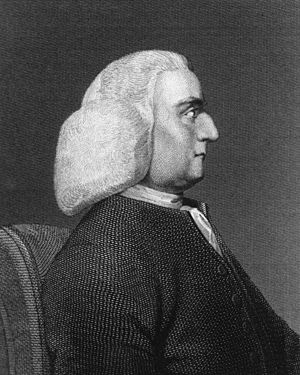Nathaniel Cotton facts for kids
Nathaniel Cotton (1707 – August 2, 1788) was an English doctor and a poet. He was known for helping people with their mental health and for writing poems that shared good messages.
Who Was Nathaniel Cotton?
Nathaniel Cotton was born in 1707. He became a well-known doctor and writer in England during the 1700s. He is believed to have studied at Leiden University, which was a famous place for learning at the time.
A Doctor for the Mind
Dr. Cotton focused on helping people who were struggling with their mental health. This means he cared for patients who had difficulties with their thoughts, feelings, and behaviors. He ran a special hospital called the Collegium Insanorum in a town called St Albans. This hospital was a place where people could get the care they needed for their minds.
One of his famous patients was a poet named William Cowper. Cowper thought very highly of Dr. Cotton and believed he was a kind and helpful doctor. After Dr. Cotton passed away, his hospital was taken over by another doctor, Dr. Stephen Pellet.
A Poet's Life
Besides being a doctor, Nathaniel Cotton was also a published poet. This means his poems were printed in books for others to read. A writer named Cheever said that Cotton's poems were "full of good sense, benevolence, and piety." This means his poems were smart, kind, and showed good values.
One of his most famous works was a book of poems called Visions in Verse. It was first published in 1751. Later, in 1791, a full collection of all his poems was put together in two volumes.
Family and Later Life
Nathaniel Cotton was married two times. His first marriage was in 1738 to Anne Pembroke. They had eight children together. Six of their children lived past infancy, and one of them, Joseph Cotton, grew up to become an important director for the Honourable East India Company.
His second marriage was around 1750 or 1751 to Hannah Everett. With Hannah, he had one son and two daughters. Nathaniel Cotton passed away in St Albans on August 2, 1788. He was buried in the churchyard of St. Peter's church.


